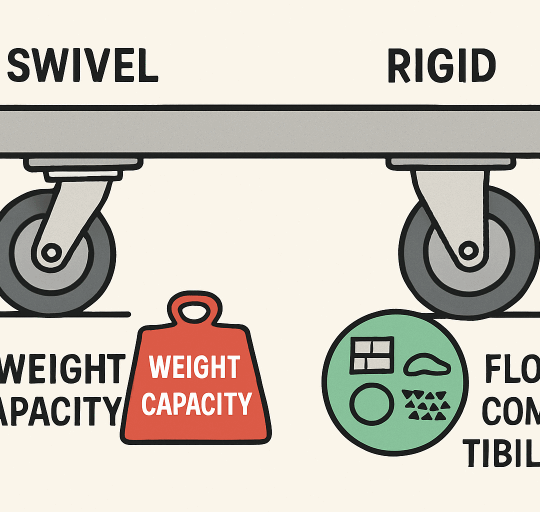 For a small business to succeed, the owner has to focus on minimizing costs while maximizing costs. This helps in ensuring that the business runs smoothly financially, which is the most critical part of a start-up.
For a small business to succeed, the owner has to focus on minimizing costs while maximizing costs. This helps in ensuring that the business runs smoothly financially, which is the most critical part of a start-up.
Fortunately, there are so many cost-cutting strategies that you can implement in your business to enhance growth. Check out these 8 ideas to help cut costs in your business.
Table of Contents
1. Lower Your Office Space Cost
One of the highest overhead expenses that physical businesses face is office space. You may be able to get a cheaper office or negotiate with your landlord for lease decrease. Research the commercial estate in your area and see if you can get a great deal.
Evaluate your options and see if your business could be operated from home. Certain tasks like bookkeeping can be done in the comfort of your home. Companies offering electrical, plumbing, and computer repairing can also be managed from home.
Besides the lease money, working from home can save you from business taxes, insurance money, and other utilities. There may be a local law or zoning in your area that may prohibit certain businesses from operating from home, so be sure to check first.
2. Cut Staffing Costs
Having a large team is another way that money gets spent quickly. Try hiring the roles that you absolutely need at the moment and consider bringing in contractors for various projects. You may also want to try using interns and cross-training them when possible.
For example, if you’ve got a new finance management graduate, get them a basement office and involve them in the finance department. This builds their self-esteem and experience and is among the best cost-cutting strategies.
3. Bartering Goods and Services
Bartering is a way of exchanging goods and services that has been used for a long time. Even with the introduction of a new currency, this method is still viable.
For example, let’s say you’re a web designer and spend most of your time coding. You may want to build a website but aren’t good at copywriting. In this case, you could try trading your skills with a writer to help you complete the project.
As long as you’re both in agreement with the time the services should be delivered, the barter trade runs smoothly. This strategy saves on cutting costs, especially for services, because you acquire goods or services using what you already have.
4. Cut Supply Costs
This is among the cost-cutting strategies that many business people don’t pay attention to. When it comes to supply, every coin you save is a coin earned. If the nature of your business demands that you get supplies frequently, getting the best deal available could be a game-changer.
This means keeping tabs on the best offers in the market. For instance, you might own a bakery and you realize there is a supplier selling wheat flour at 25% less than your current supplier. You may consider buying from a cheaper supplier.
Before you change to a new supplier, try to negotiate with your current supplier and let them know of the competitive prices in the market. In most cases, suppliers are willing to slash the prices to retain their loyal customers.
Be sure always to pay your suppliers timely, to nurture your relationship with them.
5. Cut on Advertising Costs
Many customers shop online and begin their journey by researching the products online. Because of this, marketing doesn’t have to be all costly.
Although there are paid options, such as PPC or paying for SEO services, when you’re starting try to utilize the free methods. Find out the platforms your customers interact with most, and focus on creating valuable content for them.
You’ll start seeing some results with consistency. One effective way to reduce costs is by launching a Minimum Viable Product (MVP). This strategy lets you introduce your app or service with only the core features, allowing you to validate your idea and gather user feedback before committing to full-scale development and marketing. To better understand the potential expenses, take a look at the average cost of mvp development.
6. Quick Payroll Funding Options
Payroll financing helps you with funding your business when need be. The best thing is that it’s not a long term contract, so it’s not an additional expense.
This can help you retain your old employees by honoring pay dates consistently. Recruiting new employees all the time can cost the business a lot of additional funds. First comes the onboarding that takes time that would have otherwise used in growing other parts of the business, and then the resources such as uniform and badges.
With quick payroll funding options, you can also avoid worrying and focus on other projects in the business, as well as provide quality services to customers without any delays.
7. Save On Time
Many people confuse swapping money for time as one of the most effective cost-cutting strategies in a business. A good example is driving to the post office to pick up your supplies to save $10. This means you’re saying you’re worth $10/hour- this is minus the wear and tears of your car.
Instead, pay for the delivery, and spend the hour doing other productive activities that will bring you more money. Come up with your goals and set your priority right. Learn to delegate as much as you can and focus on what really requires your attention.
8. Focus on Quality
Quality is key, whether you’re offering products or services. Customer satisfaction will always bring in more business to your company.
Keep in mind that sometimes less is more. Instead of having your employees doing so many things in a day and providing substandard results, let them focus on a few things, and provide A-results. This will save time spent on revisiting past work to do corrections now and then.
To accomplish this, be sure to place the right people in the right positions. Make sure all your employees are passionate about their positions, as this determines the results they give.
Do You Want To Learn on More Cost-Cutting Strategies?
Managing finances the right way can go a long way in making a small business successful. One thing you’ve got to learn is the cost-cutting strategies. If you feel like money has been leaking from your company, this can be especially helpful in getting back on track.
To learn more financial tips as a business owner, visit our blog.







